Easily capture every word with AI transcription
Notta AI-powered transcription tool is designed to convert your audio and video recordings into accurate, readable text transcripts with ease. Whether it's for important meetings, interviews, podcasts, or voice recordings, leveraging Notta can significantly streamline communication, enhance efficient collaboration, and take team productivity to the next level.
How to transcribe interview to text
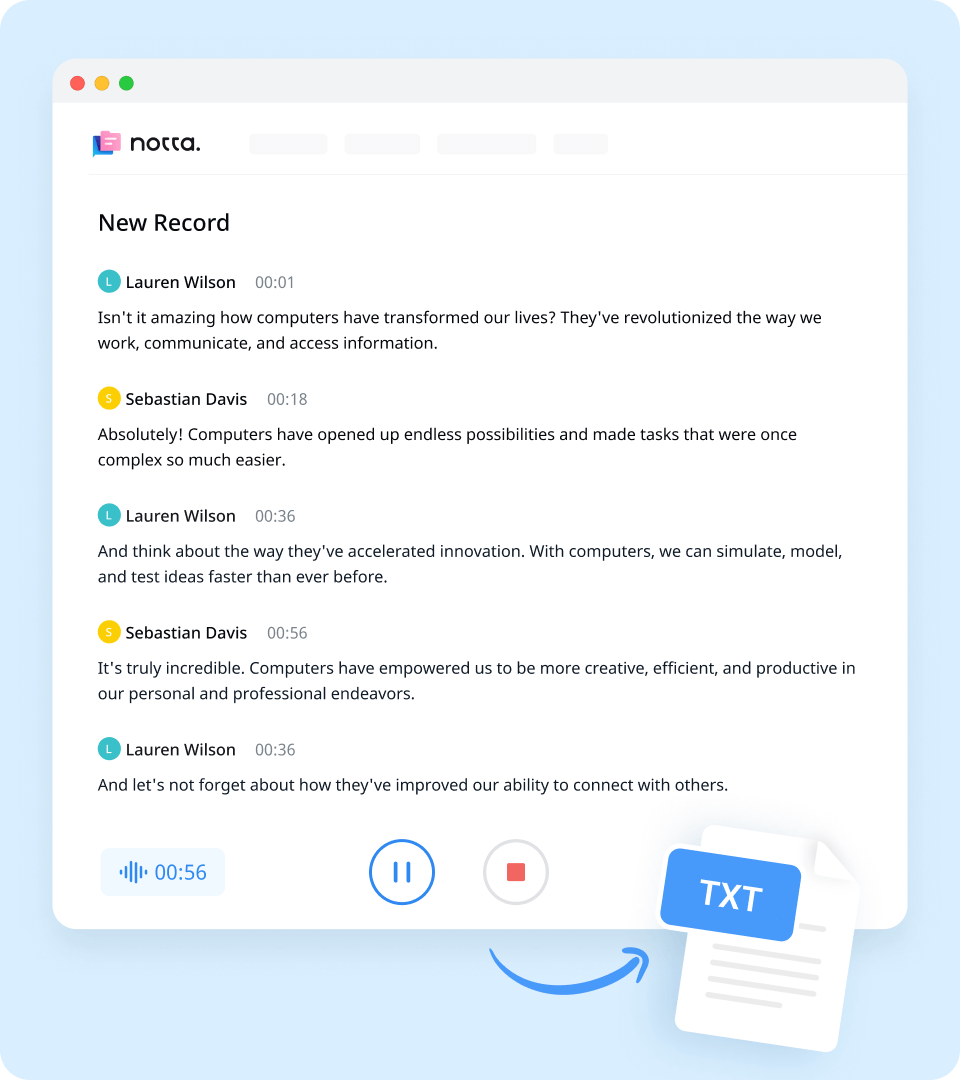
1. Import interview recording
Create a Notta account and log in. On the right side of the dashboard, click 'Import Files', then choose the language your interview is in as the transcription language. Drag and drop the file or select it by clicking 'Select Documents'. You can directly paste a URL as well.
2. Review and edit the transcript
Once the recording is uploaded, Notta will automatically start transcribing. Make sure the file size is under 1 GB. If the file exceeds 1 GB, compress it before uploading it to Notta. Notta will complete the transcription in minutes. In addition, you can have your transcript translated to various languages by using our 'Translate' feature.
3. Export and share
To save your desired qualitative research transcription, simply click on the ‘Export’ button and choose from a range of formats, including TXT, DOCX, SRT, XLSX, or PDF. Alternatively, you can use the ‘Share’ button to generate a unique link to share with colleagues or collaborators.
Enhance your meeting experience with Notta
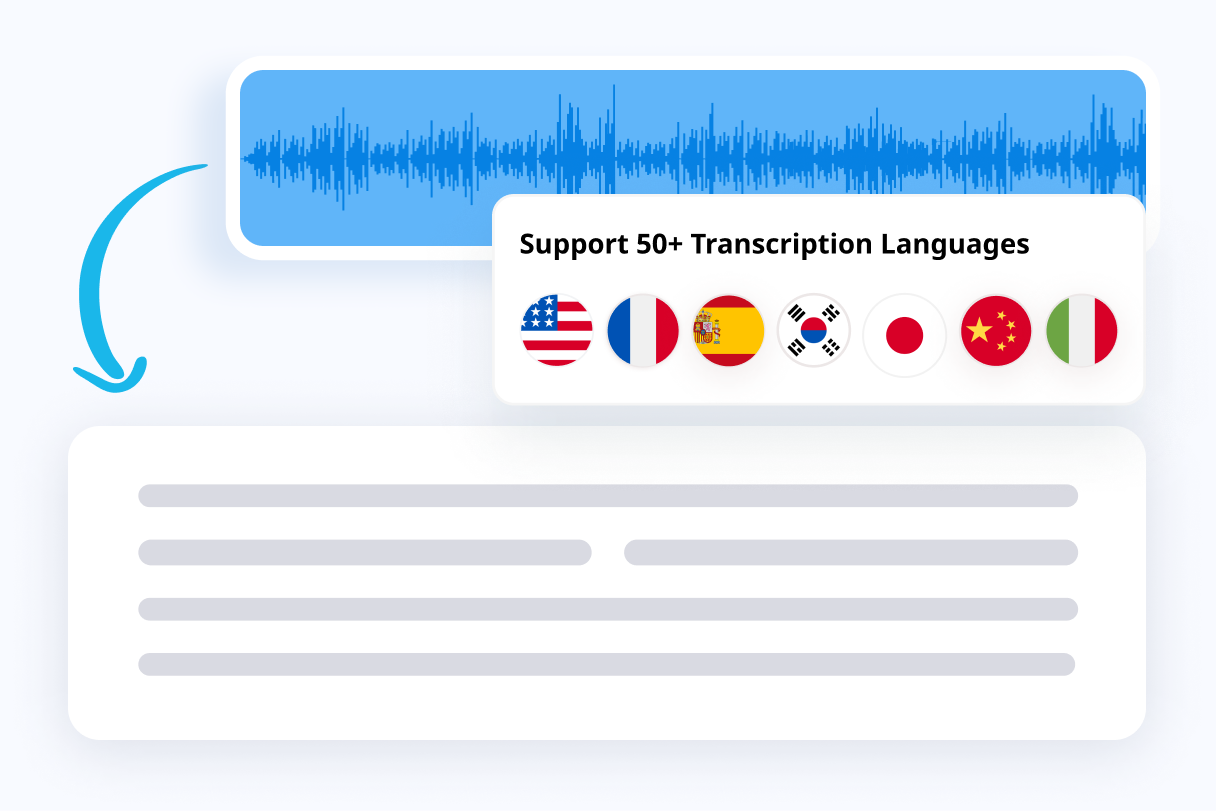
Focus on your conversations instead of constantly taking notes
Tired of constantly juggling between participating in conversations and taking notes? Say goodbye to distractions and hello to seamless engagement with Notta - the best online transcription tool. Notta’s audio-to-text capabilities are available in 50+ languages.
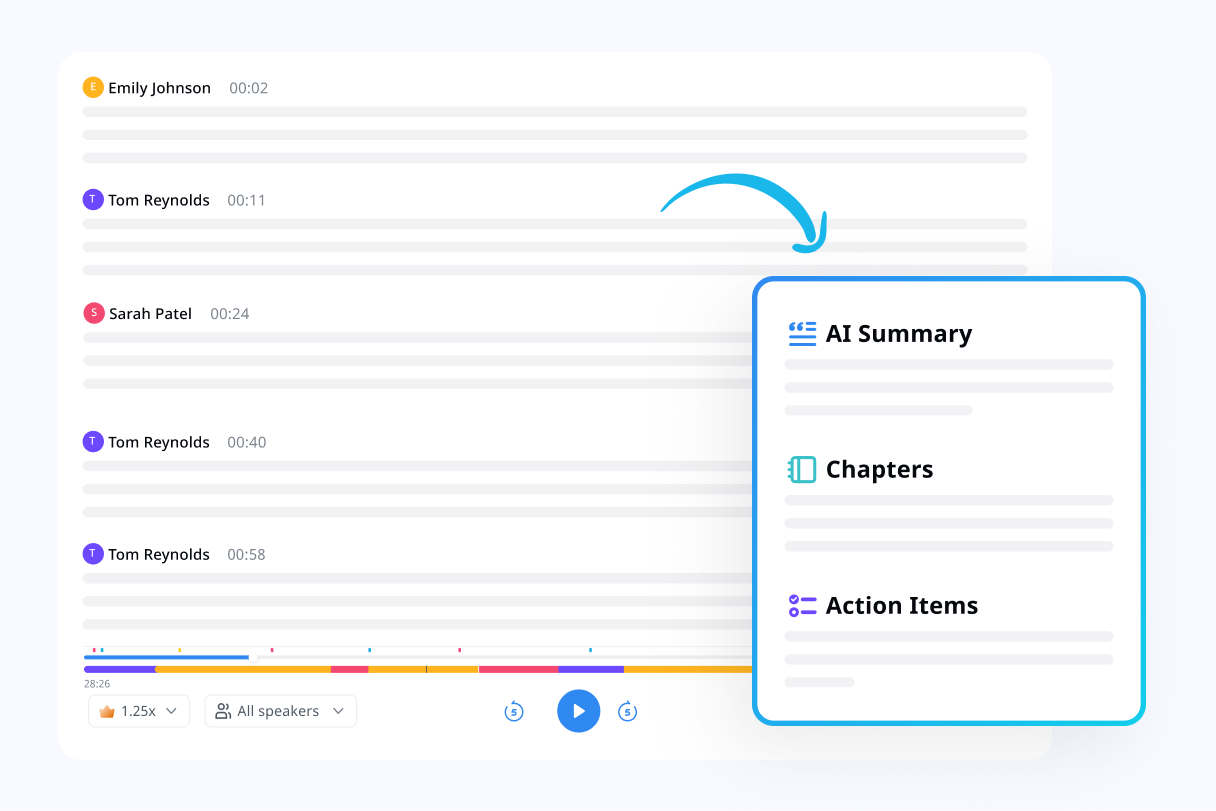
Summarize meetings with AI templates to stay organized
Notta uses AI to automatically transcribe and summarize your meetings so you can make decisions faster. With Notta’s pre-defined templates, you can streamline post-meeting processes and ensure that key insights and action items are captured accurately and efficiently.
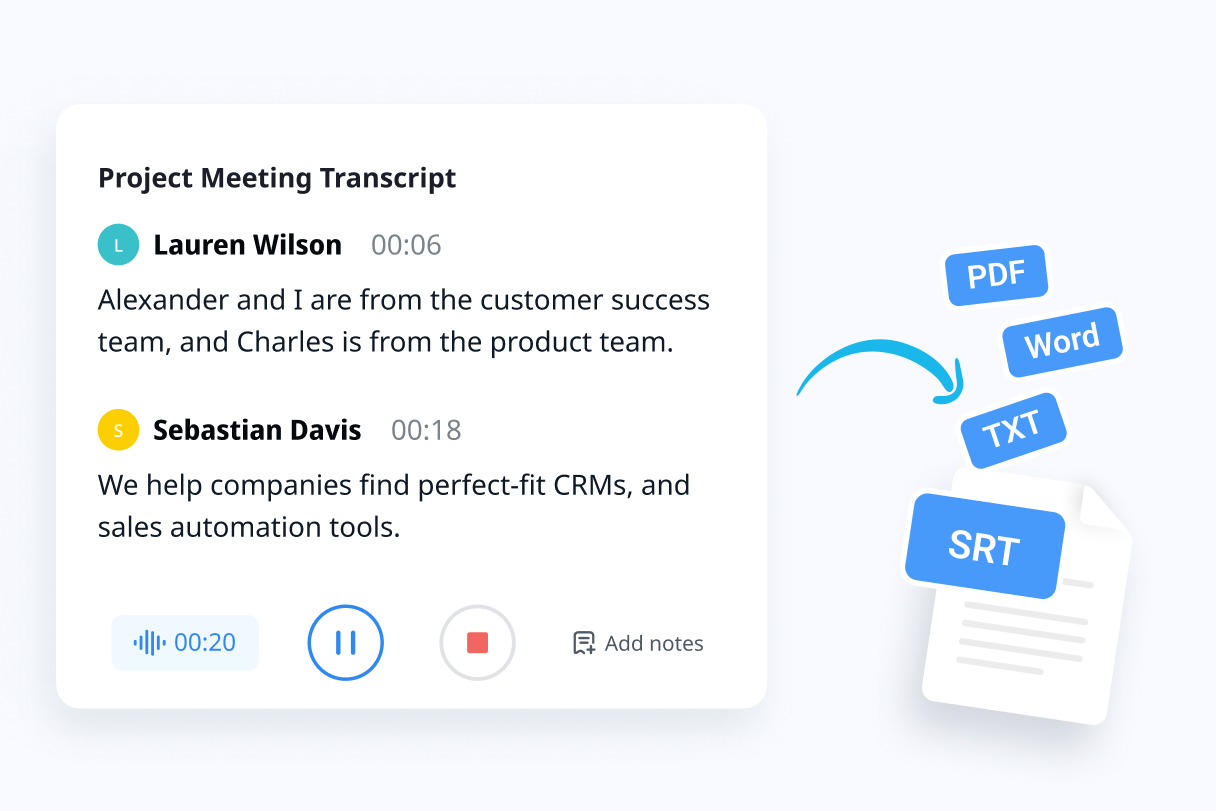
Easily export & share in multiple ways to boost productivity
Notta offers unparalleled flexibility with various export file formats and sharing methods. Effortlessly export transcripts in various formats such as TXT, PDF, DOCX, or SRT, and share them via email, link, or integrated apps like Notion, Salesforce, and Zapier.
Why choose Notta
Multi-language
Turn your sound to text wherever you are. Our voice to text converter is compatible with 58 languages, with translation also available for over 40 languages.
Security & privacy
We take securing your data seriously. Our service follows strict guidelines including SSL, GDPR, APPI, and CCPA, and we encrypt all data using AWS’ RDP and S3 services.
High accuracy
Our converter uses AI-powered technology to reliably transcribe your words with efficiency. Save time with fewer corrections and convert voice to text with an accuracy rate of up to 98.86%.
Flexible formatting
Upload and convert voice to text from audio formats including WAV, MP3, M4A, CAF, and AIFF, as well as MP4, AVI, RMVB, FLV, MOV, and WMV video formats. Our voice to text converter also integrates with YouTube, Google Drive, or Dropbox by simply pasting a link.
Sync across devices
Notta makes it easy to access your transcripts from anywhere, with seamless syncing between devices. You can access data through Mac, Windows, iPhone, iPad, Android tablets.
AI summary
Notta generate automatic summaries powered by AI. Use this trusted, handy AI tool to gain insight on your transcript, along with actionable steps to improve it.
What our users say
Frequently asked questions
How does Notta make researchers more efficient?
At Notta, we provide several tools with our qualitative research transcription services to make the process more efficient.
Firstly, our tool is optimized for speed and accuracy, giving you results in just minutes while minimizing mistakes.
Additionally, we provide several integration features that will allow you to do research from all over the web by simply pasting a link. One of our premier features is our AI summarization, which gives you a summary along with your qualitative research transcription to help you analyze more critically and review key data.
What is transcription in qualitative research?
Qualitative research transcription refers to the process in which a researcher will collect data from various sources including interviews, focus groups, observations, or other methods in which they can collect a written record of data. This helps to better analyze and study the subject to identify any patterns, similarities, or key points that may be pertinent to the research.
How long does it take to transcribe a file?
With our qualitative research transcription service, you can always expect to get speedy and efficient transcription times. Although exact times will depend on the length of your file and the quality of the audio, our tool is capable of transcribing 1 hour of audio in just 5 minutes.
How can transcription help me save time?
Our qualitative research transcription service can help you save time in a number of ways. If you’re looking to acquire data and records from podcasts, focus groups, interviews, or other audio sources, our qualitative research transcription tool will help you to convert that audio to text in no time so that it can be more efficiently reviewed and analyzed.
How many speakers am I limited to on my audio file?
Our qualitative research transcription tool will automatically detect each individual speaker in a conversation, with no limit. It is important to note however that the quality and accuracy of this detection will depend on the quality of your audio, as well as the clarity of each speaker’s voice. To improve this accuracy, be sure to use your primary microphone device as well as ensure no additional noise or muffling is in the audio.
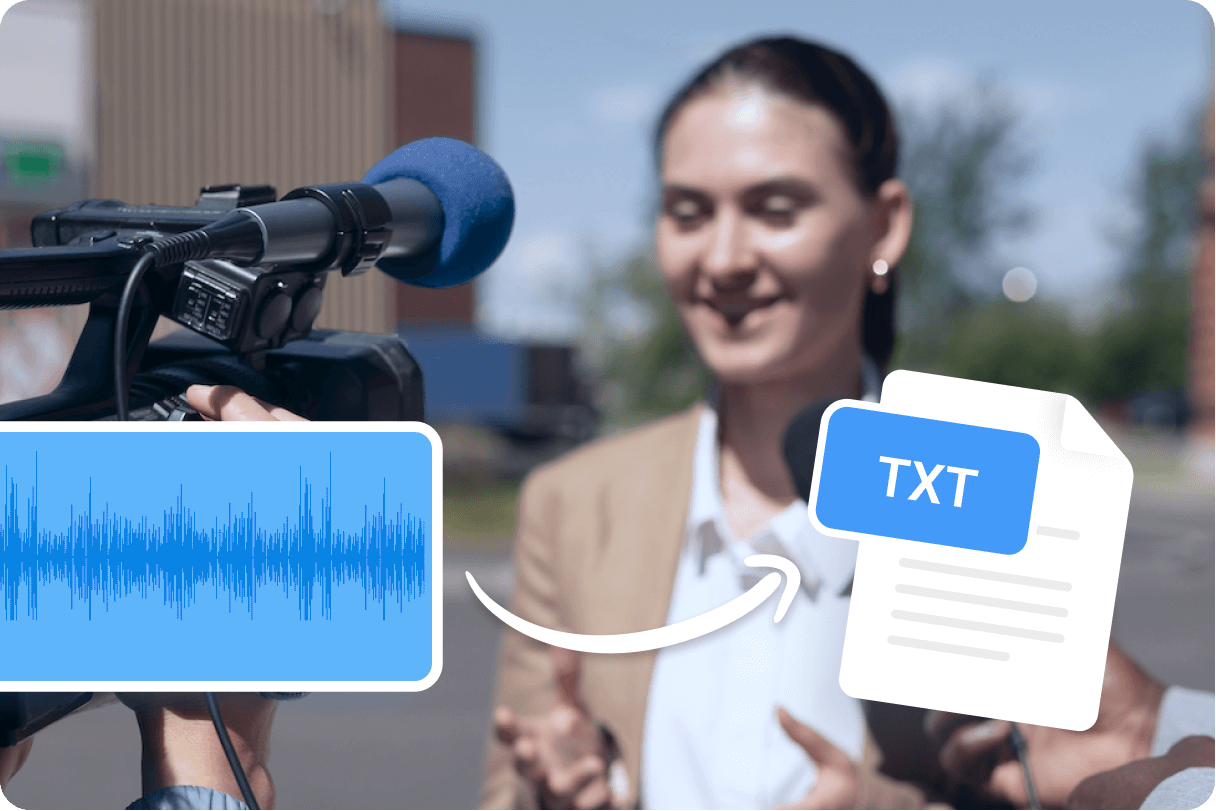



Tyler Craig
Student
I use Notta before my tests for studying, and I like that it’s easy to get YouTube videos transcribed as well. Some of my course content is on YouTube and being able to get it in text makes reviewing so much easier. 5 stars!